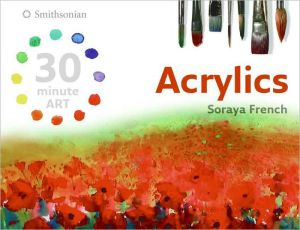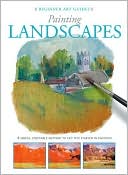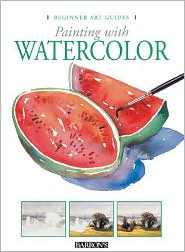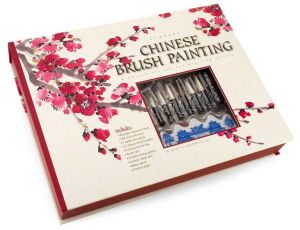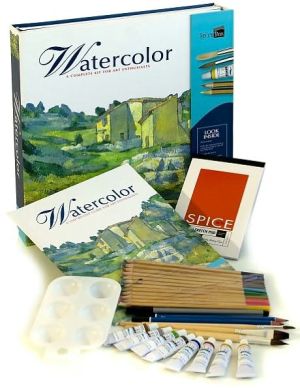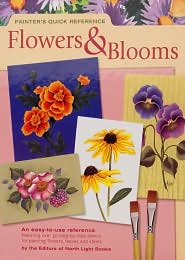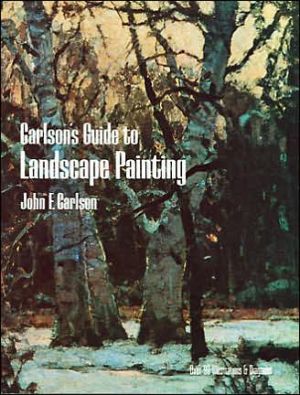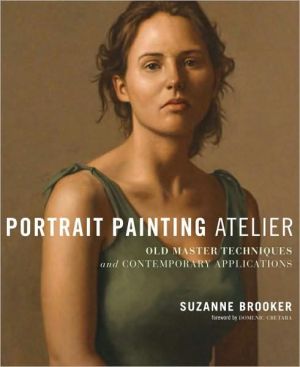Acrylics
Create beautiful acrylics in just 30 minutes!\ Do want to paint beautiful acrylics quickly and easily? This handy, practical guide encourages fast and simple learning. By working with just a few materials and focusing on key techniques, you can create successful acrylics in no more than half an hour. With clear, easy-to-follow instructions, original color illustrations, and expert advice from a leading artist, Acrylics provides excellent ideas, projects, and techniques for quick and easy art....
Search in google:
Create beautiful acrylics in just 30 minutes! Do want to paint beautiful acrylics quickly and easily? This handy, practical guide encourages fast and simple learning. By working with just a few materials and focusing on key techniques, you can create successful acrylics in no more than half an hour. With clear, easy-to-follow instructions, original color illustrations, and expert advice from a leading artist, Acrylics provides excellent ideas, projects, and techniques for quick and easy art. The ideal book for today's busy amateur artists.
Acrylics (30 minute ART)\ Chapter One\ Essential Equipment\ The wide range of art materials available to the artist today can sometimes be more of a hindrance than a help. The variety of consistencies in acrylic color can make the choice confusing for the beginner, but the exercises in this book will help you to make the right choice for a particular subject or technique. In this chapter, you will find details of all the basic equipment you need to get started—paints, brushes, supports, and accessories.\ While they are more expensive, I cannot emphasize too highly the importance of investing in good-quality artist's materials, which go a long way to ensure your progress and enjoyment of painting.\ Acrylic colors\ Acrylic colors come in different consistencies, and the ones you select will depend upon your individual style and subject matter. The various types can be intermixed, giving you an additional range of choice. Within the categories below, the consistency varies from manufacturer to manufacturer, as do the colors, even if the name is the same.\ Soft body\ Otherwise known as flow formula, this paint is heavier than acrylic ink but has a runny consistency and is more suitable for the watercolorist. It can be thickened by using impasto gel. An example is Daler-Rowney System 3 colors, available in tubes and larger containers.\ Heavy body\ These colors, produced by Golden and Liquitex, are more full-bodied and can be thinned to use in watercolor style or applied thick like oil paints. However, you will need to thicken them further for heavily texturedstyles.\ Super heavy body\ Formulated to create heavy textures and to retain brushstrokes, these acrylics have a more buttery consistency; however, they can still be thinned down if you need to glaze with them. The Daler-Rowney System 3D range comes in large tubes.\ Inks\ Acrylic inks are the most fluid form of acrylic colors. They are highly suitable for watercolor techniques but have the advantage of drying to a waterproof film that cannot be disturbed once dry, with the consequence that there is less likelihood of muddy colors.\ The inks are wonderfully vibrant and highly permanent. They can be used on their own or combined with thick color, and they can also be applied as glaze over thick color at the latter stages of a painting. They come in small bottles with a useful dropper.\ Mediums and additives\ While you can dilute acrylics with water, matte and gloss mediums can be added freely in place of water to the paint mix to aid better flow of color and to increase transparency. Both mediums are very useful in the glazing technique of painting in acrylics where the paint is applied in layers. In this case, water is only used to clean the brush and the medium is used in place of water with a damp brush.\ Texture paste or gel can be added to the support prior to painting and shaped into the desired effect, let dry, and be over painted. Alternatively, it can be added to the paint mixture to add bulk. This is useful for painting in impasto style and using a painting knife.\ Additives, such as slow-drying medium or retarder, lengthen drying time to aid easier blending of one color or tone into another. The additives change the nature of the paint and should be used strictly according to the instructions on the bottle.\ Brushes\ Invest in a set of good-quality synthetic watercolor and acrylic brushes, the former to use with the inks and the latter, which have stiffer hair, for the opaque techniques. The size of your brushes depends on the size of your paintings, but a 1-inch (25-mm) one-stroke wash brush, a short flat No. 12 acrylic brush for covering larger areas, and a selection of smaller round brushes and flat brushes will suit most artists. Riggers in both the watercolor and acrylic range will also be useful.\ Palettes\ When acrylic paints dry they form a plastic film, so it is important to keep them wet during a painting session. A special acrylics palette comprises a tray, either two layers of paper (absorbent and tissue) or an absorbent sponge and special paper, and a lid. The layers are dampened to make a surface to mix paints on. You can also spray the paints from time to time to keep them workable during a painting session.\ Supports\ Acrylics are so versatile it is easier to say which surfaces you cannot paint on instead of list those on which you can. Oil-based and shiny surfaces are unsuitable because the color will peel off at a later stage. However, you can use all types of watercolor paper, acrylic paper, bristol board, and many types of canvases.\ Gesso\ Acrylic gesso is a primer that is used to prepare the surface prior to painting. This is optional when you use watercolor paper, acrylic paper, or bristol board, but it should be used on Masonite, particleboard, or MDF (medium-density fiberboard). Gesso is available in both white and black.\ Other equipment\ You will also need a comfortable easel or table easel, a painting board, water jars, masking tape, and paper towels. A painting knife is also useful.\ Acrylics (30 minute ART). Copyright © by Soraya French. Reprinted by permission of HarperCollins Publishers, Inc. All rights reserved. Available now wherever books are sold.
Introduction 6Essential equipment 10Color and tone 16Techniques 30Creating textures 50Quick studies 58Composing your picture 74The complete picture 82Further information 94Index 96
